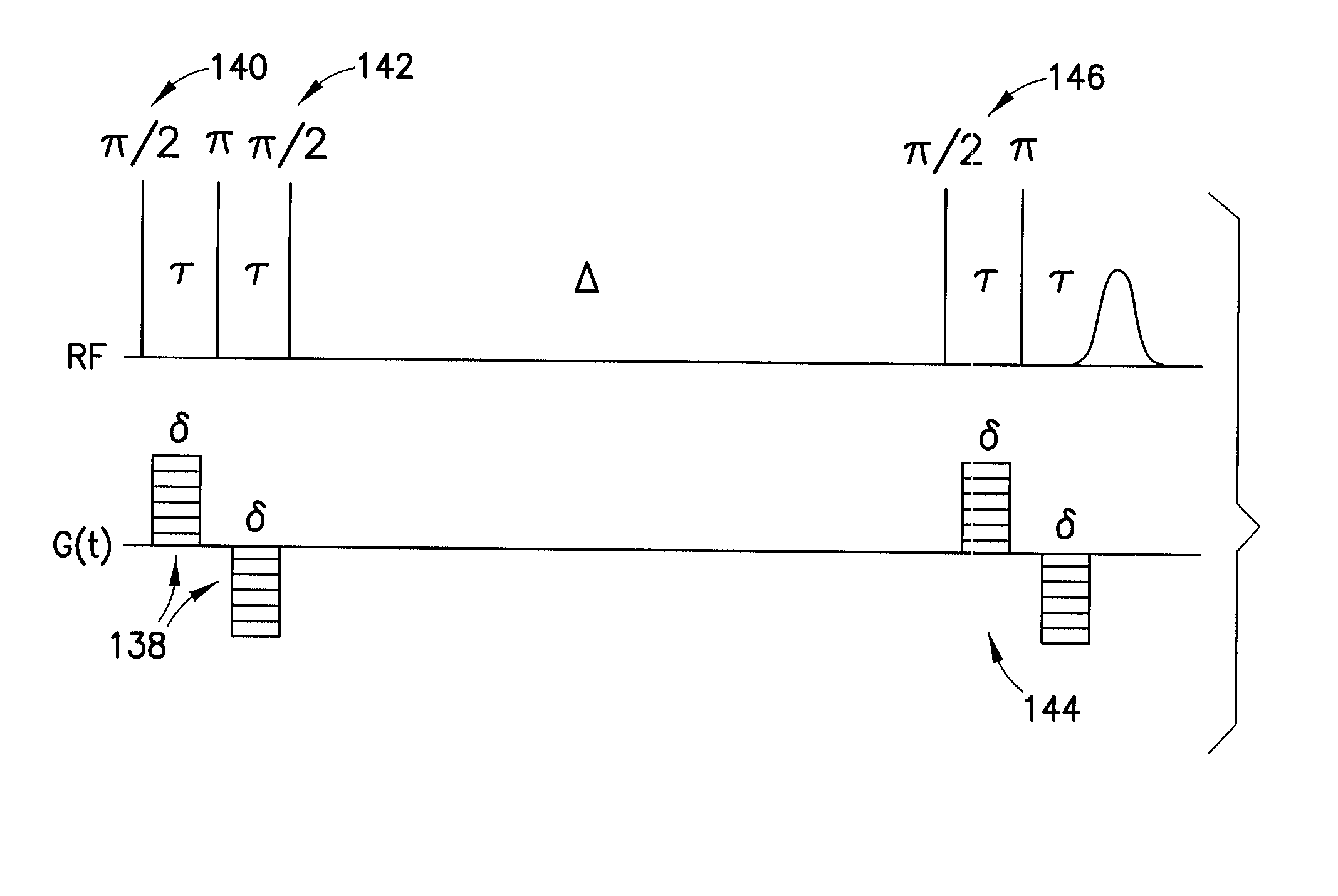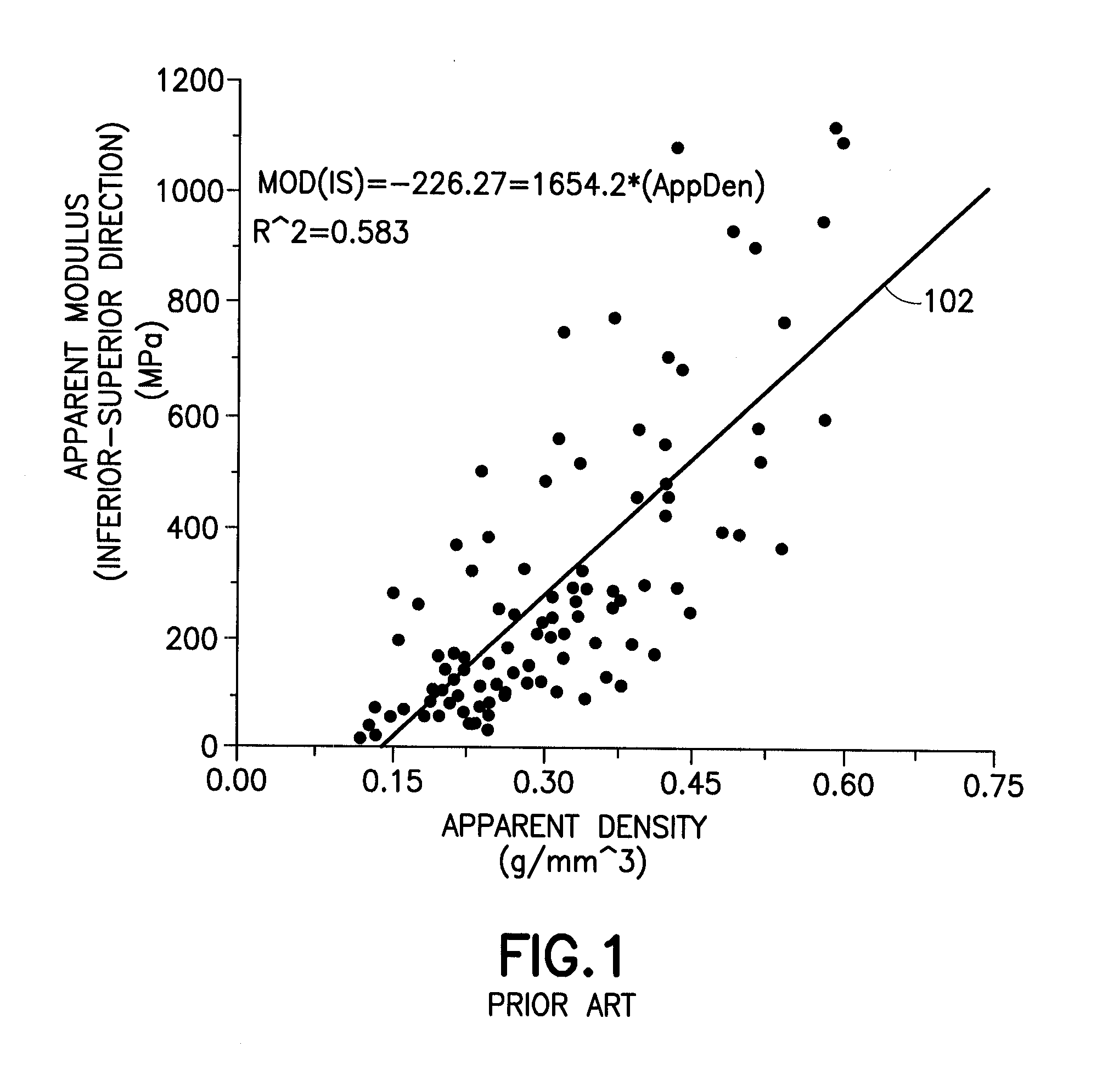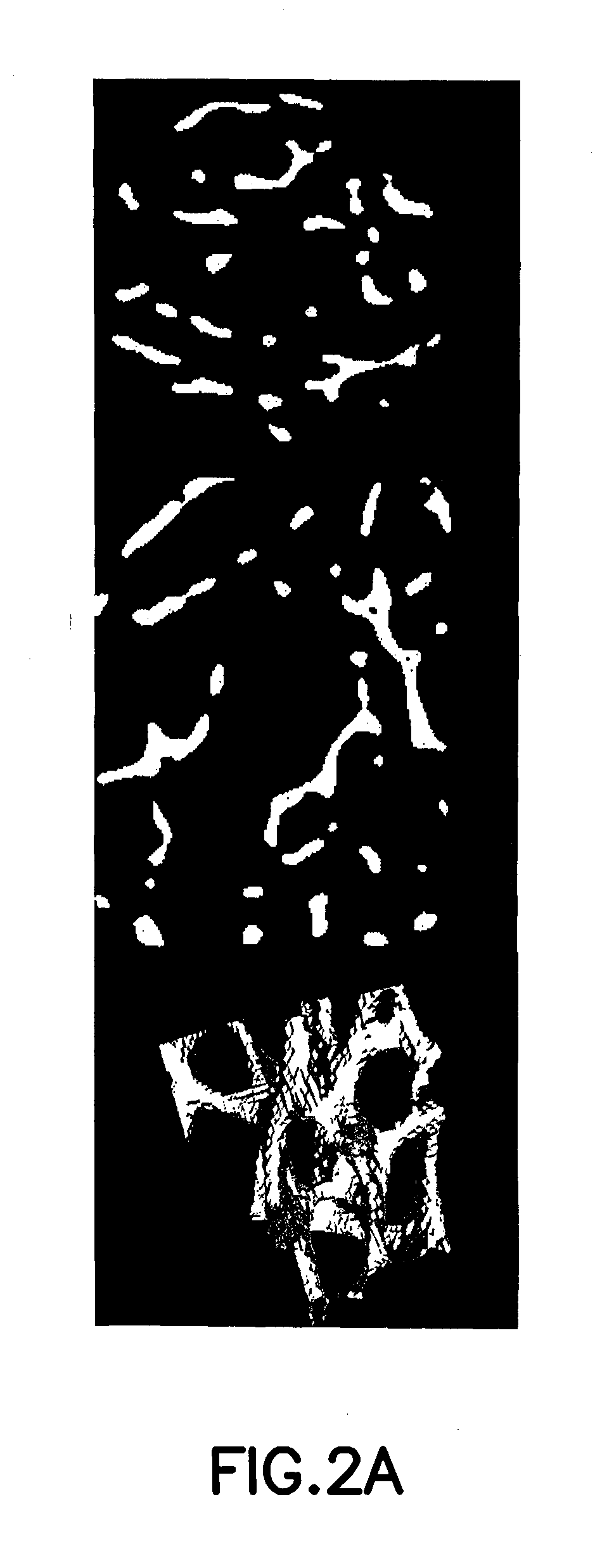Diffusion-based magnetic resonance methods for characterizing bone structure
a magnetic resonance and bone structure technology, applied in the field of improved methods for characterizing materials, can solve the problems of limited clinical value of methods relying on bone density measurements, inability to fully predict fracture risk, and insufficient density alone to account for the full variation of bone strength
- Summary
- Abstract
- Description
- Claims
- Application Information
AI Technical Summary
Benefits of technology
Problems solved by technology
Method used
Image
Examples
Embodiment Construction
[0046]There are two types of bone in the human body: cortical bone (a dense, compact bone existing in the middle of a long bone) and trabecular or cancellous bone (a more porous type of bone found generally near major joints and in the spine). Trabecular bone is comprised of a complex three-dimensional network of rods and plates. Most of the load-bearing capability of the skeleton is attributed to the trabecular bone region. The development or deterioration of trabecular bone structure is significantly affected by the mechanical forces it experiences.
[0047]The mechanical strength of a bone specimen, and thus the risk of its fracturing, depends on several factors. One very important factor in bone strength is the amount of bone material, which is related to various parameters such as bone volume fraction (BVF), porosity, or the most common clinical parameter, bone mineral density (BMD). FIG. 1 illustrates a graph of a relationship between bone strength and BMD. Apparent modulus (in M...
PUM
 Login to View More
Login to View More Abstract
Description
Claims
Application Information
 Login to View More
Login to View More - R&D
- Intellectual Property
- Life Sciences
- Materials
- Tech Scout
- Unparalleled Data Quality
- Higher Quality Content
- 60% Fewer Hallucinations
Browse by: Latest US Patents, China's latest patents, Technical Efficacy Thesaurus, Application Domain, Technology Topic, Popular Technical Reports.
© 2025 PatSnap. All rights reserved.Legal|Privacy policy|Modern Slavery Act Transparency Statement|Sitemap|About US| Contact US: help@patsnap.com



